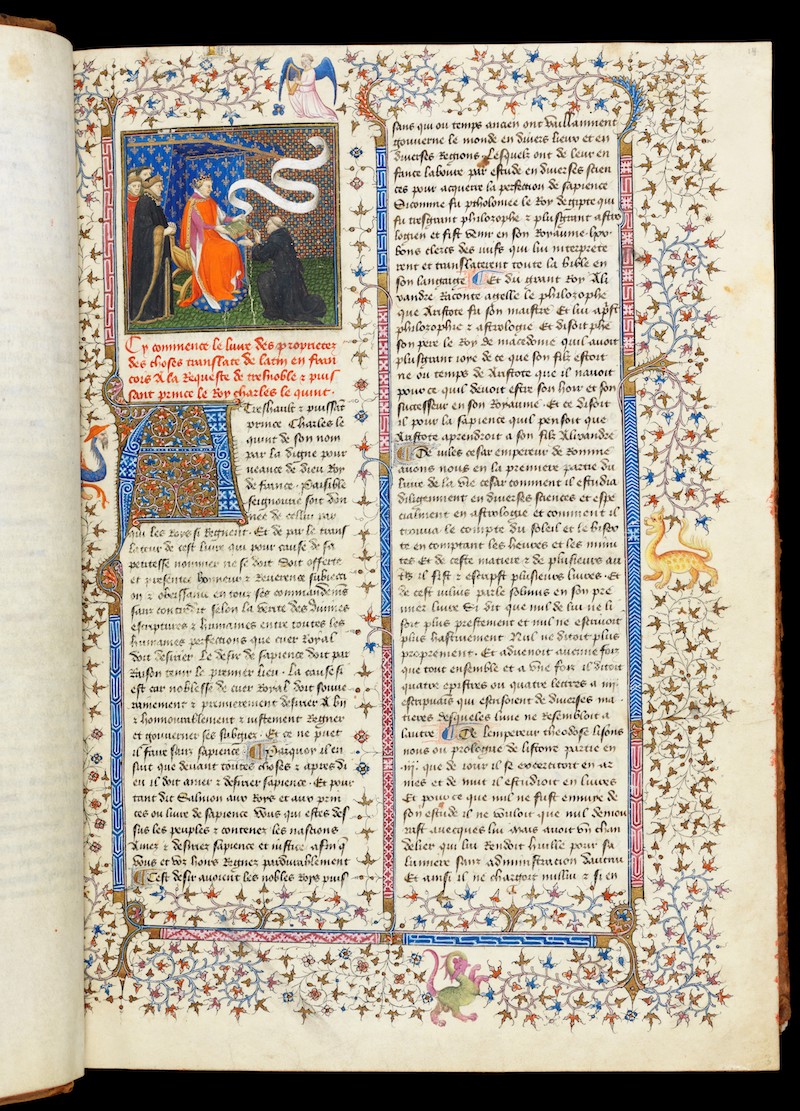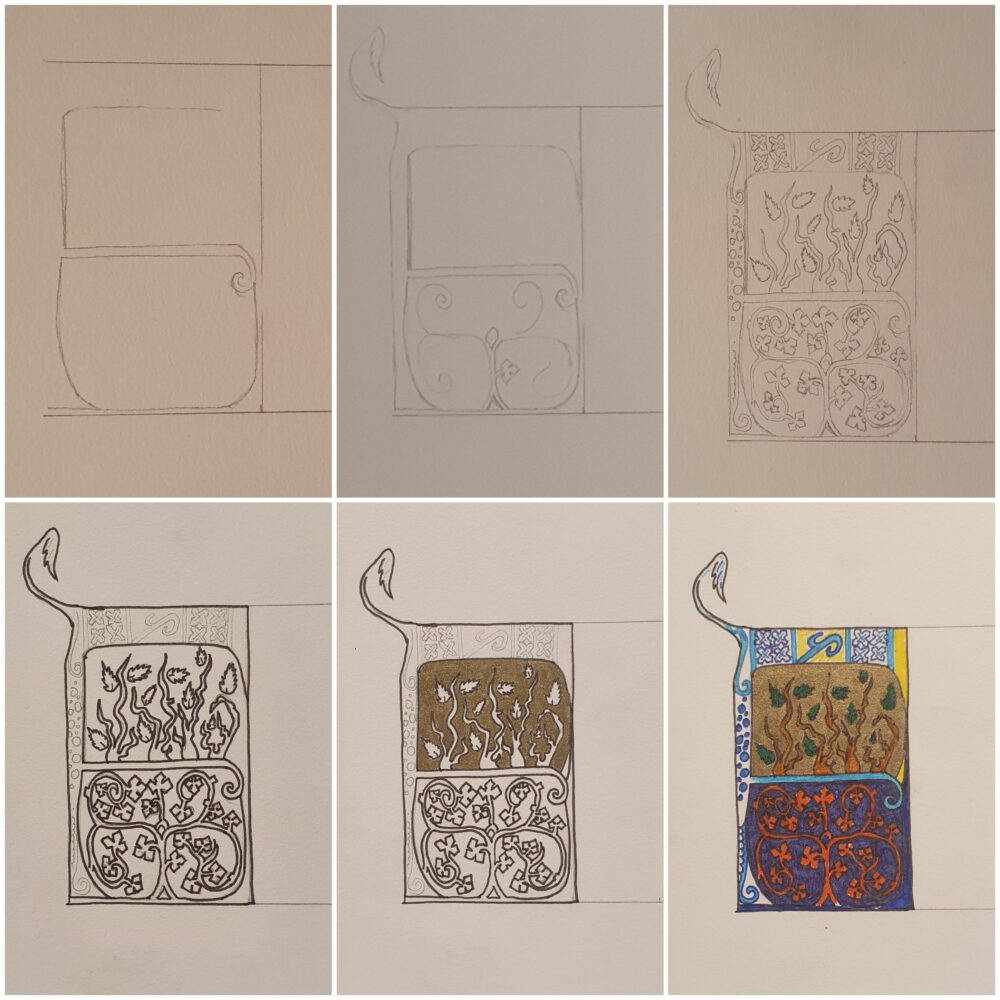Look and Think activities should take 5 -10 minutes.
Do activities might take longer depending on the task and how creative you are feeling!
Jean Corbechon, Livre des propriétés des choses, c. 1415
MS 251, Folio 13r. Paris, France.
Look
Look carefully at the decorated border of this 600 year old page.
Can you find any hidden creatures?
Think
Every page of this incredible French encyclopaedia is brightly coloured.
In medieval times, people believed that we understand the world through words and images. They illustrated their most precious books with rich colours and gold. This is called illumination.
What is your favourite book?
Imagine what colours you could use to illustrate each page.
Do
Can you find the large letter at the beginning of a paragraph?
Have a go at making your own illuminated letter. Here’s our example!
You could use the first letter in your name or illuminate a page of your own with a dragon-filled border.


Have a go at making your own illuminated letter!
- Choose your letter and use a straight edge to make a nice big box for it.
- Draw the outline of your letter. If you are a perfectionist you might want to do it in pencil!
- Add some pattern into all of the gaps. Make it up or take inspiration from our incredible illuminated manuscripts here.
- Colour it in in bright colours.
This manuscript is one of the most sumptuous surviving copies of a popular medieval encyclopaedia. Designed to provide both knowledge about the world and moral guidance, it was widely shared throughout Europe.
De proprietatibus rerum (On the Properties of Things) was written in Latin by Bartholomew the Englishman in around 1240, and was then translated into French 130 years later by Jean Corbechon, who was Charles V of France’s chaplain. Corbechon produced the French version at the command of the king who was an avid bibliophile (someone who really likes books). Commissioned by Amadeus VIII, Count of Savoy (1383-1451) and grandnephew of Charles V, this spectacular copy of Corbechon’s text was illuminated by the Master of the Mazarine Hours in Paris c. 1415.
The Museum’s collection of medieval and Renaissance manuscripts is one of the best its kind in a public museum. It spans the period from the ninth to the sixteenth century and represents all major schools of European illumination. The vast majority of medieval painting was created on the pages of illuminated manuscripts. This painting has survived well as it was less exposed to the elements and protected between solid covers. Manuscripts preserve their original pigments fresh and largely untainted by later treatment or neglect. They are a rich source of information on all aspects of contemporary life, and also serve as portable galleries of paintings.
Zoom in on this incredible page or see more of our illuminated manuscripts here. (Please use Internet Explorer or Firefox)
Download this Look Think Do as a PDF or a Word document.